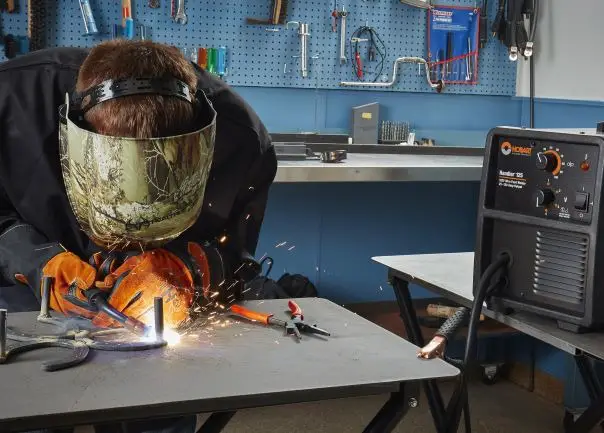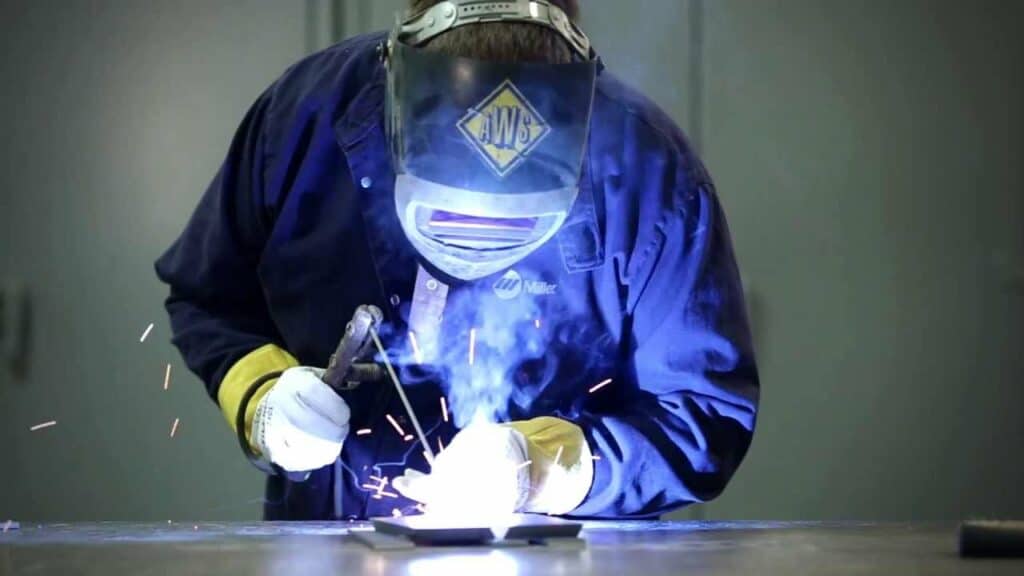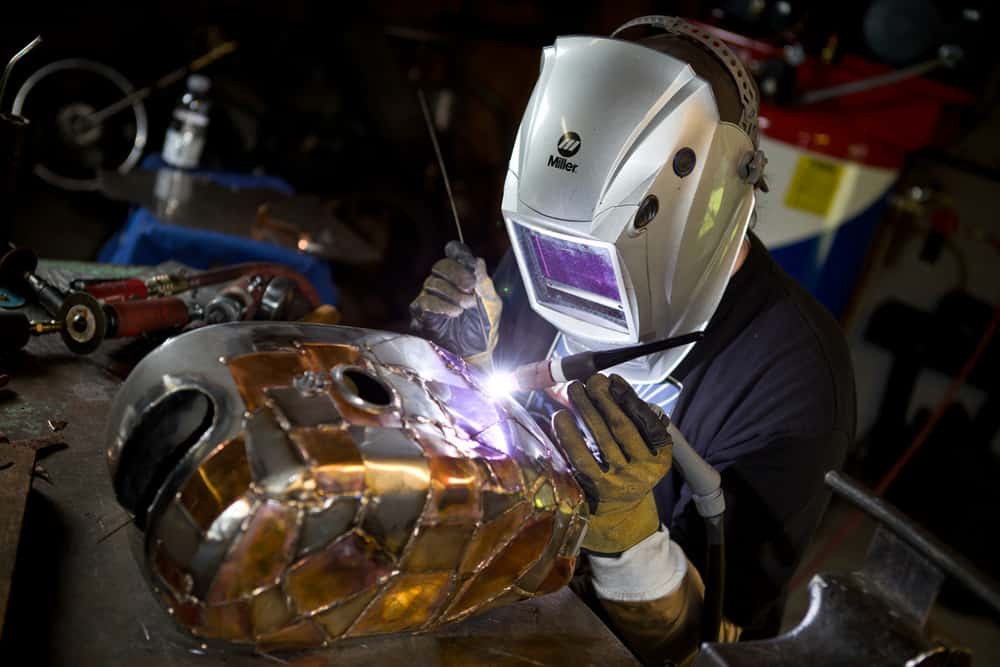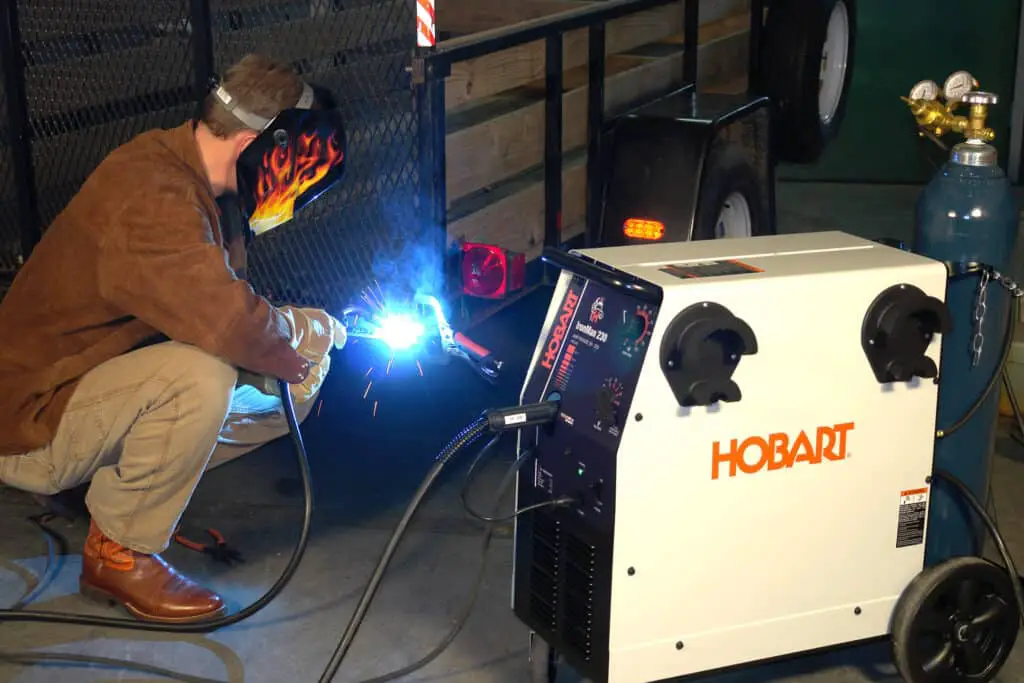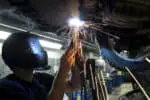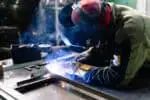There are times when we all have wondered how many amps a welder requires. Having a proper knowledge about welders is important because if you have insufficient amperage, you may not be able to start your welder, much alone generate the heat and power required to melt and weld solid metal.
Too much and you risk scorching the metal, causing it to bead, or overloading the welder, perhaps causing it to explode.
To Select a Welder and Establish the Amount of Amps, a Few Things Must be Considered-
1.) Type of Metal.
2.) Thickness of Metal you intend to Weld.
3.) What do you intend to do with the Welder?
4.) Do you have enough Power Supply?
Let us look at it in details-
1.) Type of Metal.
First and foremost, you should evaluate the type of material you are welding. Different materials have varying degrees of strength, and various metals have varying melting points.
Because there are so many differences, you can’t and shouldn’t use the same amount of amperage for different materials.
Aluminum, stainless steel, and low carbon steel are among the most often employed metals in welding.
To efficiently melt and weld these and other metals, you’ll need to use a melting point calculator to establish how hot your welder has to be. There is also the issue that not all metals are made equally or have the same welding characteristics.
2.) Thickness of Material you Intend to Weld
Even if you are a novice welder, it should come as no surprise that thickness has a significant impact on how much heat, power, and amperage you use to weld anything.
While thickness is always important, the exact amperage difference might vary greatly depending on the metal being welded. A decent rule of thumb in TIG welding for metal, for example, is 1 amp per 0.001 thickness.
If you want to weld thick material, such as 1/2′′, the 220v machine will allow you to burn hotter and penetrate the material deeper. However, if you want to weld 1/4′′ thick material or less, a simple 110v welder should suffice.
Check out this table for reference:
| Gauge | Metal Thickness (mm/ inches) | Amps Required |
| 8 | 4.2/ .164 | 164 |
| 10 | 3.4/ .135 | 135 |
| 12 | 2.7/ .105 | 105 |
| 14 | 1.9/ .075 | 75 |
| 16 | 1.5/ .060 | 60 |
| 18 | 1.2/ .048 | 48 |
| 20 | 0.9/ .036 | 36 |
| 22 | 0.8/ .030 | 30 |
| 24 | 0.6/.024 | 24 |
3.) What do you Intend to do with the Welder?
The actual welding operation you’re doing might have a significant influence on how many amps you need to power the equipment. If you’re doing a work that demands more power, you’re going to need more amperage.
Welding gates, machinery, and other farm-related items normally requires an amp welder with at least 200v.
However, if you want to do higher-octane work that needs a three-phase welder, you’ll need something with between 300 and 600 amps.
But if you’re only using your welder as a hobby or for low-level jobs, you shouldn’t require as much amperage. A 110v machine capable of producing 140 amps should suffice.
4.) Do you have Enough Power Supply?
If you’re welding in your garage, you’ll only have access to 115 volts, which may limit your options.
If you have a small business or farm, you will most likely have the choice of 220v, which will allow you to purchase a larger amperage equipment.
Finally, if you own a small firm, you will most likely have access to three-phase electricity, which will allow you to run larger welders.
Different Welding Technique and Amperage Selection
The three primary welding procedures that we will look at in terms of amperage selection are Stick, TIG and MIG.
1.) Stick Welding- A stick welding operator may use one amperage setting one day when welding a steel plate for a building and another setting the next day while surface welding a backhoe bucket.
The good thing about stick welding is that there are charts that can be accessed easily online or in welding stores that anticipate the amperage required for a specific welding thickness.
And if you need to make minute adjustments to the heat of the weld during a stick weld, the simplest method to do it is to slightly move the welding rod away from the weld puddle to long-arc. This will result in a larger and hotter puddle.
2.) TIG Welding- When it comes to amperage, TIG welding is unusual in that the foot pedal on the TIG welding machine regulates the amperage required in the weld based on the user’s input.
The foot pedal begins at 0 amps and steadily increases in amperage when the welding operator presses the foot pedal down to a specified limit. The amperage control on the foot pedal is restricted by the TIG welding machine’s amperage capability and the machine’s settings.
3.) MIG Welding- The power needed during a MIG welding process is determined by the voltage settings on a conventional MIG welder.
It is usually vital to strike a balance between voltage and wire feed speed. Especially since the wire feed speed must grow in tandem with the voltage or the weld puddle will not be effectively filled with filler material.
Start with the lowest voltage setting for thin materials and gradually raise the voltage for thicker materials. As long as the underlying materials do not vary much, MIG welder machines are intrinsically constant.
The Electrode
Stick welding is the only welding procedure that exhibits a substantial link between electrode and amperage. This form of stick welding and amperage are inextricably linked.
TIG and MIG welding techniques too, employ electrodes, however TIG uses a semi-consumable tungsten rod and MIG uses a highly consumable wire, both of which have no bearing on amperage choices.
There are several varieties of electrodes available for stick welding, each with a specialized use. Electrodes, for example, differ from one another depending on the thickness of the base material being w elded.
After you’ve chosen your stick electrode, learn what the manufacturer advises for welding amperage. The specific amperage required is determined mostly by the diameter of the electrode.
An eighth-inch diameter electrode, for example, welds well between 75 and 125 amps. A 5/32 diameter electrode, on the other hand, can weld ideally at up to 220 amps.
The suggested duty cycle for your stick welding equipment is an important factor when regulating the amperage on the machine.
What is a Duty Cycle?
The duty cycle of a welder is the period of time it can work at a certain amperage. Duty cycle is often displayed as a percentage, thus if a welder has a 30% duty cycle at 90 amps, it can weld continuously for 3 minutes and will require 7 minutes of rest before you can resume welding.
However, the issue with duty cycle arises when you need to weld for extended periods of time. If not, nearly any welder will suffice, but for many individuals, including myself, this will just not suffice.
Another issue with duty cycles is that the higher the amperage, the lower the duty cycle. So, if you have a smaller 110 volt 150 amp welder, it will usually only be able to run 20% duty cycle at 70 to 90 amps.
How Much Amperage do you Need in a Welder?
Welding is used in a variety of industries. It seems to reason that what works for modern sculpture will not work for shipbuilding or industrial ironworkers.
One of the first things you should ask about a welding machine is whether you’ll be employing it for a particular purpose or whether you’ll be using it as a hobby.
Because the sort of job you do will decide whether you need a MIG, TIG, or stick welder, as well as how much power the machine needs.
Higher amperage gives you more possibilities, but it may come with sacrifices like a higher price tag and less mobility, making a high amp machine less appealing.
However, here are some Advantages of a Higher Amperage:
1.) Deeper Penetration – When it comes to welding, penetration is key. The deeper the weld, the better the chances of it holding.
2.) Weld Thicker Materials – You may weld thicker materials with higher amp machines.
3.) Cleaner Consistent Welds – The most appealing aspect of higher amp welds is their consistency and cleanliness.
4.) More Alternatives – In the end, larger amperage machines just provide you with more weld options.
Conclusion
Choosing an amperage setting is not as difficult and daunting as you would assume.
Certain critical elements, such as application and base material, welding process, and electrode, dictate the amperage that should be employed in a certain welding application.
Finding the optimum amperage for your weld should be simple if you keep these primary considerations in mind.

